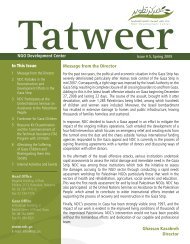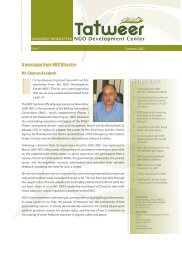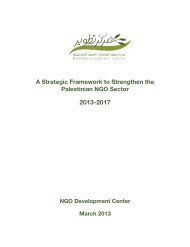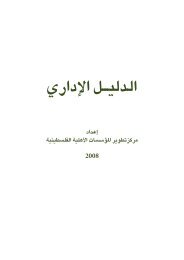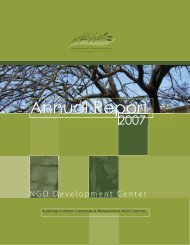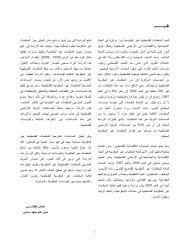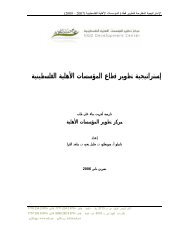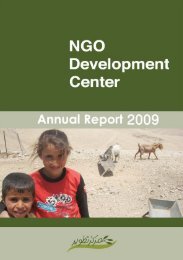Tracking External Donor Funding.pdf - NDC
Tracking External Donor Funding.pdf - NDC
Tracking External Donor Funding.pdf - NDC
Create successful ePaper yourself
Turn your PDF publications into a flip-book with our unique Google optimized e-Paper software.
The Subsector Breakdown of the PRDP (2008 – 2010)<br />
Infrastructure – Road Improvement, Road Safety, Air and Sea, Electricity Sector Investment, Water and Wastewater<br />
Management, Public Recreation and Culture<br />
Economy – Institutional Reform for Enterprise, Trade Infrastructure and Facilitation, Enterprise Investment and<br />
Development, Agribusiness Development, Industrial Capacity Development, Tourism Industry Development,<br />
Affordable Housing<br />
Social - Social Protection Reform and Integration (SPRI), Access To Education, Quality Education For All, Education<br />
Performance & Efficiency, Vocational Training Initiative, Health Quality Improvement, Health Care Affordability,<br />
Women’s Empowerment, Youth Empowerment, Employment Generation Initiative<br />
Governance – Justice Now, Open and Accountable Government, Efficient and Effective Government, Accountable<br />
Local Government Security –Reform and Transformation<br />
Source: MoP, 2007. PRDP (2008 – 2010)<br />
During the December 17 th , 2007 Paris Conference,<br />
“Building a Palestinian State: Towards Peace and<br />
Prosperity”, donors pledged over 7.7 billion USD to the<br />
three year plan. Table 10 shows the distribution of the<br />
pledges by donor country groupings.<br />
Table 10: Distribution of PRDP<br />
Pledges by <strong>Donor</strong> Country Groupings<br />
<strong>Donor</strong> Country Grouping Pledges (*) % of Total<br />
European (incl. EU) 4,093 53.1<br />
North America 839 10.9<br />
Arab Countries 1,524 19.8<br />
Other Countries 411 5.3<br />
Int’l Organizations 843 10.9<br />
Total 7,710 100%<br />
Source: PA MoP, 2008<br />
Note: (*) Amounts given in millions USD.<br />
Critics of the PRDP<br />
‘The PA has formed twelve governments during<br />
the thirteen years of its existence. Each of these<br />
governments experienced instability in the<br />
political, economic, social, and security<br />
environment. This discontinuity of leadership<br />
and lack of stability left little space for effective<br />
Palestinian institutions to take root and mature’<br />
(PRDP, 2008:31).<br />
According to some of the Plan’s architects, the PRDP is<br />
an agenda that guides the incoming government’s work.<br />
Individual ministers may reformat and restructure<br />
components of the plan, but they must remain within an<br />
overall framework. This has in many ways worked to<br />
reverse the crippling effects of political instability upon<br />
policy making. However, the plan is not without its<br />
critics.<br />
A number of people interviewed described the PRDP as<br />
a ‘donor-driven’ exercise, and apparently one aimed at<br />
furthering the elusive ‘donor agenda’, while clothed in<br />
the fashionable phrasing of ‘ownership’ 30 . According to<br />
the PINGO Network and other progressive organizations<br />
such as Stop the Wall, the PRDP the represents an<br />
implantation of the World Bank and G8's neo-liberal<br />
agenda into the WB&GS 31 . Critics claim that there is an<br />
overemphasis on the role of the private sector and<br />
security in bringing about development that blatantly<br />
ignores the political and economic constraints to such an<br />
approach.<br />
30<br />
For an extended critique of the PRDP, see Stop the Wall (2008)<br />
Development or Normalization<br />
31<br />
According to Adam Hanieh (2008), the PRDP may represent the<br />
'harshest attack on any public sector in the Middle East in recent<br />
history, with the PA committed to cutting 21% of public sector<br />
jobs by 2010'.<br />
24


